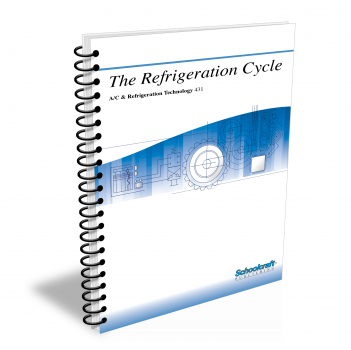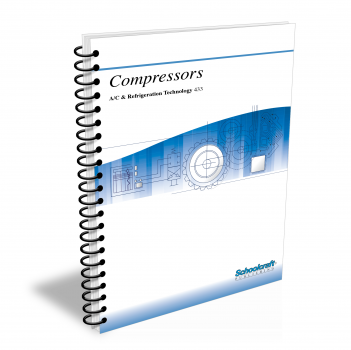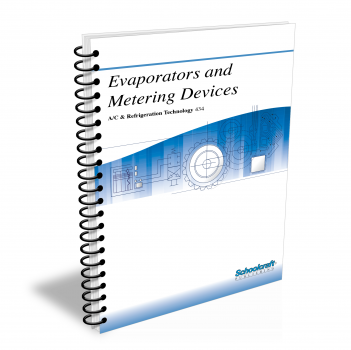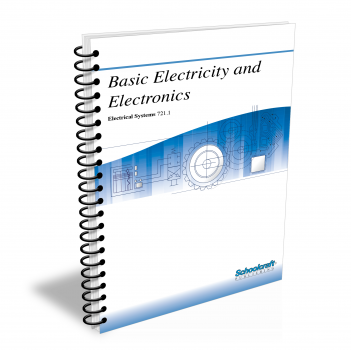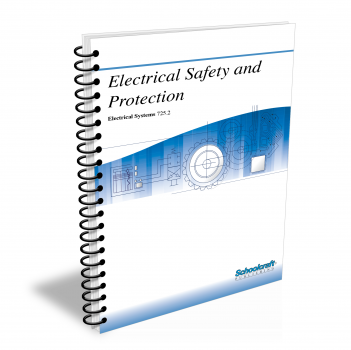Refrigerants and Refrigerant Oils
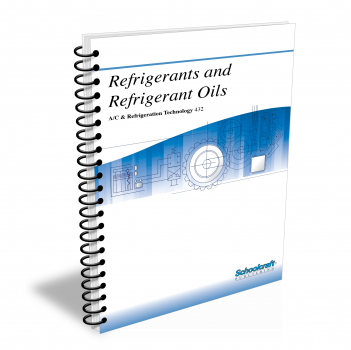
Course Number: 432
The Refrigerants and Refrigerant Oils textbook covers the physical properties of refrigerants, including pressure-temperature relationships. It discusses various kinds of refrigerants and their safe handling. It examines the effects of refrigerants on the atmosphere and related EPA requirements. It discusses filters, driers, leak detection equipment, and the gauge manifold set, and explains system charging, evacuation and dehydration, refrigerant recovery/recycling, and oil maintenance and servicing.
Does your curriculum require additional topics not included in this textbook? Build a customized version of The Refrigerants and Refrigerant Oils textbook below.
Recommended Contact Hours – 14
Preview a Chapter
Available Supporting Material
- Table of Contents
- Exam Copies
- Suggested Titles
Table of Contents
Chapter 1: Physical Properties of Refrigerants
Topics: Pressure-temperature relationship; Enthalpy; Pressure-enthalpy diagrams; Liquid subcooling
Learning Objectives:
- Explain the relationship between pressure and boiling point in a liquid.
- Define the term enthalpy, and differentiate between the enthalpy of saturated liquid, the enthalpy of evaporation, and the enthalpy of saturated vapor.
- Use a P-H diagram to show the process of evaporation, compression, condensation, and liquid metering.
- Calculate the compression ratio, refrigerating effect, refrigerant flow rate, heat of compression, compressor horsepower, and coefficient of performance for a system.
- Determine compressor discharge temperature, compressor volume displacement, superheat, subcooling, and total heat rejection in the condenser, using a P-H diagram.
- Explain the purpose and methods of liquid subcooling.
Chapter 2: Refrigerant Classification and Applications
Topics: Refrigerant identification; Refrigerant/oil mixtures; Common refrigerants and mixtures; Ammonia; Safety; Handling containers
Learning Objectives:
- Identify several properties of the ideal refrigerant.
- Explain the ASHRAE standard for refrigeration identification.
- Discuss in detail some common refrigerants in use today-their advantages, disadvantages, characteristics, and applications.
- Define the terms blend, fractionation, temperature glide, and azeotrope.
- Describe how refrigerants are classified for safety purposes.
- Explain the safety precautions that must be taken when handling and storing
Chapter 3: Refrigerants and the Atmosphere
Topics: Ozone hole; CFCs and ozone; Greenhouse effect; Alternative refrigerants; Changes in servicing, installation practices
Learning Objectives:
- Explain how CFCs deplete the ozone layer and contribute to the greenhouse effect.
- Explain how refrigeration system servicing procedures have changed in response to the discovery of ozone depletion.
- Name the "three Rs" and define each term.
- Identify several ways in which good installation practices can prevent refrigerant leaks.
Chapter 4: Refrigerants and the EPA
Topics: Clean Air Act; Section 608 overview; Refrigerant recovery; Releases and leaks; Enforcement; Logs; Certification testing; Purchasing refrigerant
Learning Objectives:
- Name some of the steps being taken by the United States government to control the depletion of stratospheric ozone.
- List the five main elements of the EPA regulations concerning recycling, emission reduction, and disposal.
- Contrast active and passive recovery equipment.
- Define the three types of refrigerant releases permitted by EPA regulations.
- List the reports you should keep concerning refrigerant purchase and use.
- Explain the levels of technician certification.
Chapter 5: Refrigerant Filters and Driers
Topics: System contaminants; Types of filters, driers, and filter-driers; Desiccants; Strainers; Suction filters; Installation precautions
Learning Objectives:
- List the contaminants that can infiltrate or form within a refrigeration system.
- Describe the various types of filters, driers, filter-driers, and strainers used in mechanical refrigeration systems.
- Distinguish between absorption-type and adsorption-type desiccants.
- Explain the importance of proper location when installing filters, filter-driers, and strainers.
- List the important factors to consider when selecting a filter-drier.
- List several safety precautions to follow when working with filter-driers.
Chapter 6: Tools & Procedures for Working with Refrigerants
Topics: Leak detection; Vacuum pump; Gauge manifold; Checking refrigerant charge; Evacuation and dehydration; Charging; Recovery/recycling
Learning Objectives:
- Describe the various methods of locating leaks in a refrigeration system.
- Explain how to connect a gauge manifold to a system and how to remove air from the manifold.
- Explain how to check the refrigerant charge in a system.
- Name and describe the two methods of evacuating and dehydrating a refrigeration system.
- Describe the procedures for vapor charging and liquid charging a system.
- Identify and explain the various methods of adding the correct amount of refrigerant to a system.
- Contrast active and passive refrigerant recovery.
Chapter 7: Refrigerant Oils, Oil Maintenance, & Service Procedures
Topics: Oil properties; Compressor lubrication; Oil-related problems; Oil separators; Contaminants; Maintenance and servicing; Adding and removing oil
Learning Objectives:
- Explain the purposes oil serves in a refrigeration system.
- Define the following properties of oil: stability, viscosity, miscibility, floc point, and flash point.
- Name the two broad categories of oils and the sub-categories of each.
- Explain how oil becomes mixed with the refrigerant and the problems its presence can cause in a refrigeration system.
- Describe the function of an oil separator.
- List several problems that can be caused by water in a refrigeration system.
- Describe the procedures for checking oil level and adding or removing oil.
Request Exam Copies
Exam Copies
Ready to see a copy of our textbooks? After selecting which textbooks you’d like to review for your course, you can submit your request by either logging in or creating an account so we know where to ship your exam copies. A representative from Schoolcraft will contact you to confirm and finish processing your request.
Exam copies are always free and yours to keep.
Selected Exam Copies
none selected
* Maximum of five copies can be ordered
